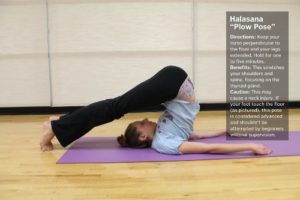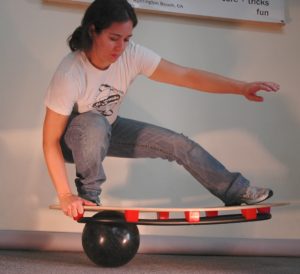So the other day I was helping a Muay Thai fighter / trainer “see the light” as she is having low back and upper back pain. Its interesting how in this modern day and age, there’s so many otherwise smart people that simply imitates follow certain “youtube stars” exercises for inspirations. I hope this article will help those still “living in the dark” train better.
Learn to Stretch Smart

Ah, if I get a penny for every person that cracked their cervical spine due to this pose, I would be rich already. Let me get this straight, your cervical spine is very thin and was never meant to hold your body weight. Good trainers know how to balance between risk of certain stretch and the associated reward. Some people ended up putting some if not most of their weight on their neck while in this position. Hence this is a particularly risky pose. I have attended Ann Barros’ Iyengar yoga teacher training. She is a direct disciple of Iyengar himself. And she is not very fond of this pose, to put it in kind. So if you want to loosen up your neck after a session, there are better ways to massage your neck, say using self myofascial release any good trainer should know.
Second of all, as Dr. McGill has often emphasized in his book “Ultimate Back Fitness and Performance“, Great athletes don’t just stretch their muscles endlessly, they fine tune the muscle elasticity for specific athleticism. Any motorhead out there can understand that the suspension of a street race car is designed to be rough but stable while a family sedan suspension would be designed for comfort. The same can be said about your back and core muscles. Some are designed for mobility and some are designed for stability. The more mobility you introduce to a particular joint the less stable that joint is. As an example, the best long distance runners do not have a very loose hamstring.
Yes I know how trendy it is to infuse yoga to other training. But how many yoga master you know actually won any Olympic gold medal? Fact is, some poses might be good to train your core stability and endurance, while some others will wreck your back, especially if you already have discogenic pain and you have one of those crappy yoga teachers that like to “challenge” you without realizing that individual bone structures are different and will affect a person’s mobility.
There’s a Time and Place and Limit for Everything
 If you are an athlete that needs to push or pull with one leg or one hand at a time, your training should definitely have more balance component to it than a power lifter. However, some “youtube stars” have apparently jumped the sharks in terms of proprioceptively enriched training and unless you are training to be a circus performer, then it doesn’t really matter if you can jump on a swiss ball. In fact Eric Cressey once did a research on athletes with no ankle problems where the control group did regular athletic training and the study group had combined BOSU ball stability training thrown in. Within 6 months, the group with the additional BOSU ball training actually performed WORSE than the control group.
If you are an athlete that needs to push or pull with one leg or one hand at a time, your training should definitely have more balance component to it than a power lifter. However, some “youtube stars” have apparently jumped the sharks in terms of proprioceptively enriched training and unless you are training to be a circus performer, then it doesn’t really matter if you can jump on a swiss ball. In fact Eric Cressey once did a research on athletes with no ankle problems where the control group did regular athletic training and the study group had combined BOSU ball stability training thrown in. Within 6 months, the group with the additional BOSU ball training actually performed WORSE than the control group.
The key here is to train specifically for your sport. An NFL defensive lineman needs to be able to counter dynamic loading on the upper body while standing on stable surface. Telling him to squat on a BOSU ball would be the other way around. Hence Dr. McGill emphasized on recognizing the athlete’s movement pattern and then train them specifically. He would further explain all this in his book.
Conclusion
At the end of the day, it depends on what you want to do. Why do you train? If you are a Muay Thai fighter and you are using a body building protocol to increase your power, you might find your strength and weight increases but you became a lot slower. If you are a big boned individual and you want to loose weight, going to any random yoga studio might leave you with lots of pain, not the good kind, more in the league of pars bone fractures and disc bulges. Some yoga teachers are more enlightened and will know how to customize the exercise for you but I do not have faith in most of them. Hence the title, train with your brain, train for a purpose. You should first decide what your goal is, understand your body, then train accordingly. If you decided to follow a particular “guru”, then you should question the scientific justification he/she uses to develop your program. I for one follow the McGill method.

